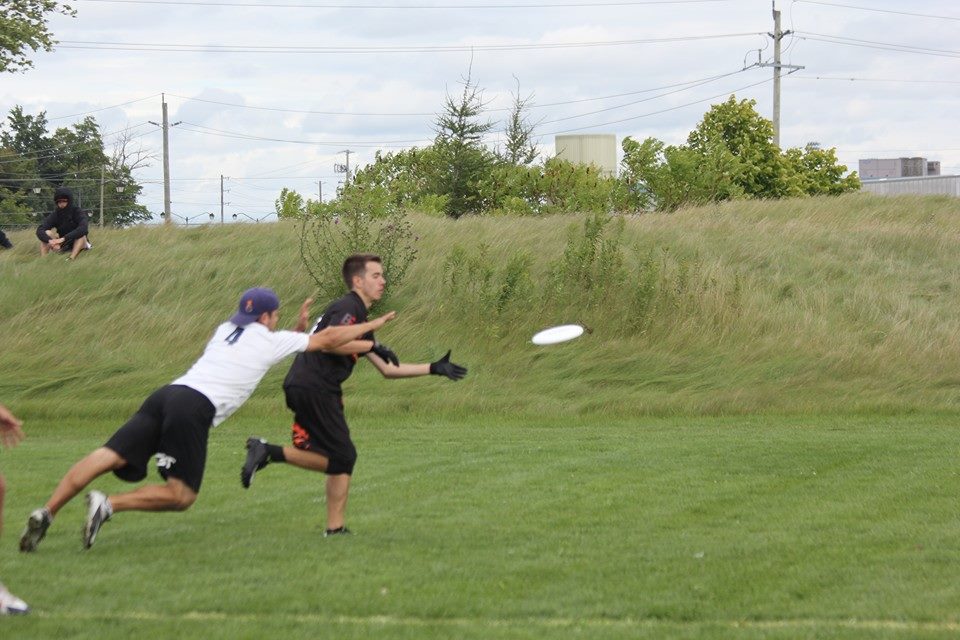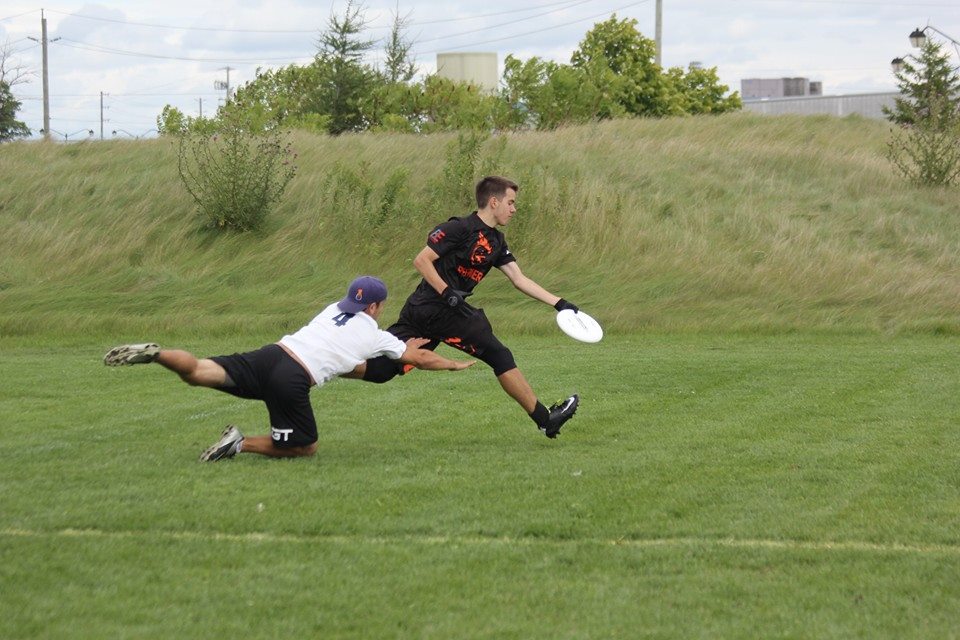 http://savas.ca/blog/wp-content/uploads/2014/08/10583818_263626650514941_1218933930316026122_n.jpg 960w" sizes="(max-width: 419px) 100vw, 419px" />
http://savas.ca/blog/wp-content/uploads/2014/08/10583818_263626650514941_1218933930316026122_n.jpg 960w" sizes="(max-width: 419px) 100vw, 419px" />  http://savas.ca/blog/wp-content/uploads/2014/08/10561605_263626877181585_8087387770451625009_n.jpg 960w" sizes="(max-width: 420px) 100vw, 420px" />
http://savas.ca/blog/wp-content/uploads/2014/08/10561605_263626877181585_8087387770451625009_n.jpg 960w" sizes="(max-width: 420px) 100vw, 420px" />
This is the second ultimate related post, outlining my experience at CUC 2014 (Canadian National Championships for ultimate).
Background
Up until now, I’ve only ever played in junior nationals. Even though I’m still 18 years old, because of the year I was born in, I’ve been forcibly removed from the 18 and under bracket and put in the adult league. This means that although I’m still 18, I’m playing against 25 year olds who are bigger and have more experience than me. Despite my competitive nature and the enjoyment I’d probably have stomping everybody in juniors, playing a year of varsity ultimate and a summer of adult ultimate has really improved me a lot more than if I was playing against 18 and under players. Unfortunately, this means that at CUC this year, I was not only the youngest player on my team, but also one of the youngest competing. This provided a challenge for me and I’m overall pretty happy with my performance.
The tournament
CUC this year was in Waterloo, and unfortunately it landed on a chilly weekend with lots of wind. After playing all summer in mild Vancouver summer conditions, this was a bit of a shock both to my team and to me. We had just spent all summer training in very low wind, and were then forced into 35kph winds. As my team is one of relatively low skill, fundamental throwing and catching became a big problem in the wind. Due to the cold in the morning of the first day, I opted to wear my friction gloves (the first time I’ve actually used them at a tournament). I wear them mostly because my hands have poor circulation, and as a handler having cold hands is incredibly debilitating; while this was the main reason for the gloves, they also provide a bit of extra grip which doesn’t hurt when the disc is a bit more unpredictable. I ended up wearing the gloves for the rest of the tournament as they didn’t seem to be negatively impacting me at all.
I’m happy to say that after the first few games, I had mostly adjusted to the wind, keeping all of my throws low and snappy and taking a bit of power out of my downwind hucks (while generally avoiding upwind ones). Unfortunately, as a team, our fundamental skills were still a bit slow to develop: we still had many unnecessary drops and fumbles. It quickly became apparent that the people who could adjust the fastest to the wind conditions would be the ones who got the most playtime: I ended up playing every offensive point in the tournament for Refinery.
The second day, while not a good one for our team, was one of the best days of ultimate I’ve ever played. Due to the continuing wind, many teams attempted to play zone defense, attempting to cause turnovers by forcing tough throws between handlers. Our offensive line, after struggling with zone the first day, came out incredibly strong the second day, shredding zone to pieces and generally tiring out defensive lines that attempted to play it. A mixture of handler crashes and swings with well timed mid pops meant that no zone lasted very long and our turnover count against zone was pretty low. Because our team is on the lower end, our best handlers generally get put on O line, while the defensive handlers are mainly made up of cutters who have good throws. This became very apparent in the second day, as our D line struggled to convert turnovers into points. Our games ended up being slow losses as our offensive line inevitably turned it over once or twice.
Our third day was much more of the same, although much of the team was now frustrated with our continuing and glaringly apparent issues: fundamentals and defensive breaks. While we actually played pretty good ultimate, I know that many of our players were a bit frustrated with our lack of success.
Mooresey
I had the privilege this tournament to play with a pickup from Montreal (who happens to be my last year’s coach), Greg Moore. As a two time Team Canada player, and an offensive cutter, he had a lot of advice to share about O line and strategy. I learned quite a few new plays over the tournament and he really helped solidify zone offense for our team. I generally like to play pretty laid back and calm (as an O line handler, a hasty drop can be incredibly costly), but Greg pointed out that sometimes moving quickly opens up opportunities that otherwise wouldn’t be there. For example, if the other team turns it over near their end zone, quickly picking it up can take advantage of the confusion as the opposing team attempts to find their checks and turn what could be a tough endzone to a quick point. For the rest of the tournament, I spent a lot of time thinking about the situations in which being hasty was helpful and when it was detrimental.
Throwing in the wind
I don’t have that much experience throwing in windy conditions, but as it quickly became apparent that our team would not be competing for a spot in the finals, I focused in on using the opportunity to improve my throws and catches in the wind. This involved changing the edge on my flick slightly (more IO, a lot more snap), and changing my backhand (lower release, tons of snap). A lot of being a good handler is being able to adjust to the wind, and I found that I was pretty successful at changing the edge and speed of my throws depending on the current conditions (up/down/cross wind). The one throw that I still need a lot of work on is my upwind flick break. Because I release it so far away from my body (and low), I find it hard to keep the edge down and the disc ends up popping up in the air